Sugar beet grower looks to increase nitrogen using biostimulant
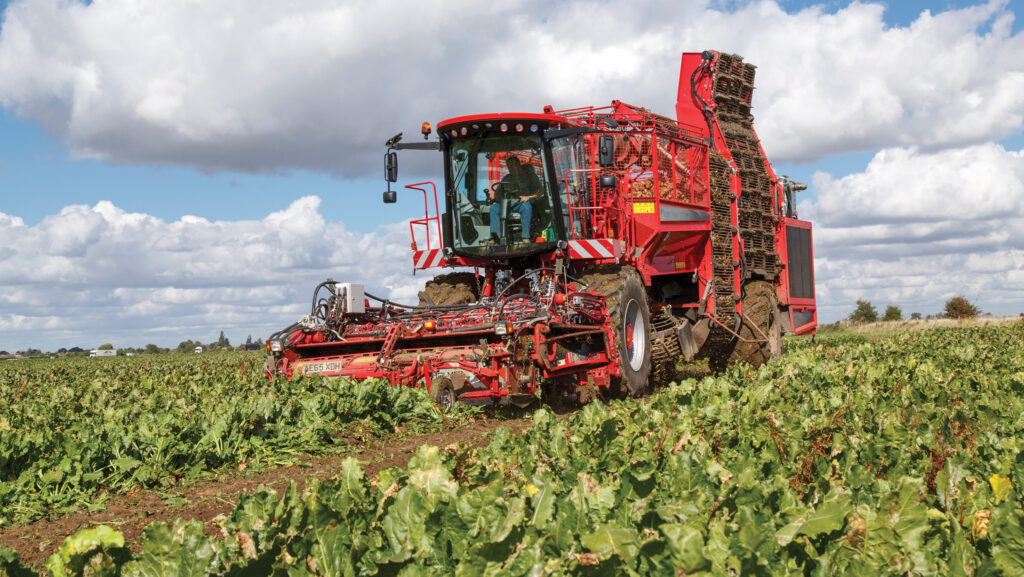 © GNP
© GNP One Suffolk arable contractor is trialling a nitrogen-supplying biostimulant to his sugar beet after a nutrient-draining wet winter, which could potentially cut his use of artificial nitrogen fertiliser.
In June, Sam Myhill applied BlueN, containing a naturally-occurring bacteria which can fix nitrogen from the air, to give a late season boost to his sugar beet after reaching the optimum application limit of nitrogen fertiliser for his crops.
In a very wet spring, when his beet crops have struggled with a lack of warm sunshine, he hopes this added application will help boost the yield of a crop which is destined to show his highest profit margin this season.
See also: 3 risks to assess before drilling winter wheat early
“We are looking to provide more nutrition to the crop by using the bacteria to provide slow-release nitrogen,” he tells Farmers Weekly.
He has already used nitrogen on his sugar beet to near the optimum of 120kg/ha by way of pig manure in the autumn, and then 85kg/ha of liquid nitrogen applied to the seed-bed.
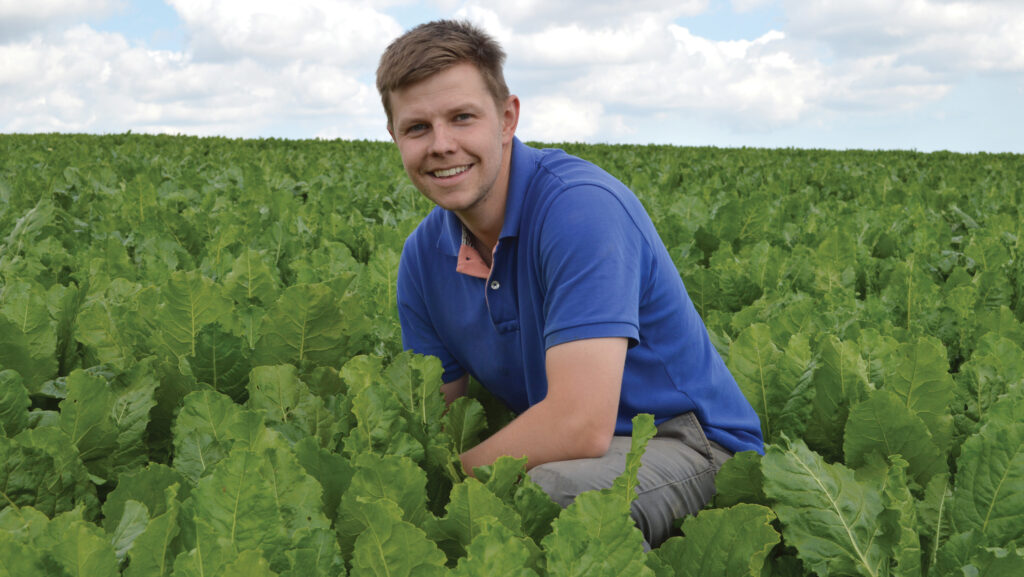
Sam Myhill © David Jones
Establishment
The crop was drilled into a cold and muddy seed-bed in the spring after months of wet winter weather. The aim was to give the beet the best possible crop nutrition to get it growing well on his medium to heavy soils.
Sugar beet prospects this season have been checked by the wet spring and lack of sun, but he was prepared to try a new approach to maximise returns from this valuable crop.
“Sugar beet is our top gross margin crop, so we were prepared to invest to maximise returns,” he says.
The sugar beet crop is worth a near record amount this season, with one option being a £40/t fixed price for the beet.
The nutrient-efficient biostimulant contains the bacteria methylobacterium symbioticum, which fixes nitrogen from the air and converts it into ammonium inside the plant, feeding the crop for 10-12 weeks.
Sam grows 50ha of sugar beet on one of the three sites he contract farms around Halesworth, in east Suffolk, as MB Farming Ltd.
While keen to make his first foray into biological products in such a difficult season, he was concerned over the low levels of residual nitrogen in the soil after the wettest winter on record in east Suffolk.
He looked to supplement the applied nitrogen that had already been delivered through pig manure and liquid nitrogen.
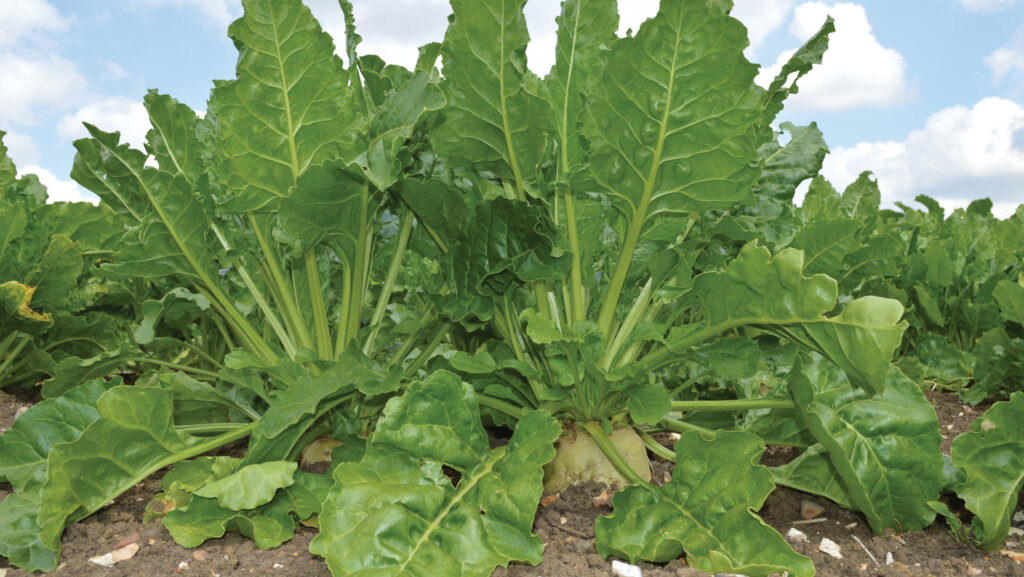
Good sized sugar beet root in early July © David Jones
Using less fertiliser
In addition, Sam says that his landlords are keen to move away from using artificial fertilisers while the farming operation still operates profitably and sustainably.
“Our landlords like the idea of using new products rather than just reaching for the fertiliser bag,” he says.
As well as boosting the crop’s performance after using up to the recommended limit of 120kg/ha of nitrogen on sugar beet, he could also start reducing the level of artificial nitrogen going forwards by using the biostimulant.
Sam’s contracting business farms 600ha of arable land on largely medium sandy clay loams around Halesworth.
This includes the 50ha of sugar beet, along with winter wheat, spring and winter barley, and oilseed rape.
The 50ha of sugar beet land received 30t/ha of pig manure in the autumn of 2023 following a cereal crop, and was ploughed in October.
In the spring, the ground was sprayed with glyphosate, power harrowed and drilled over the Easter weekend in late March/early April.
It received 85kg/ha of liquid nitrogen in the seed-bed which, together with 30kg/ha from the pig manure, brought the total to 115kg/ha.
Application
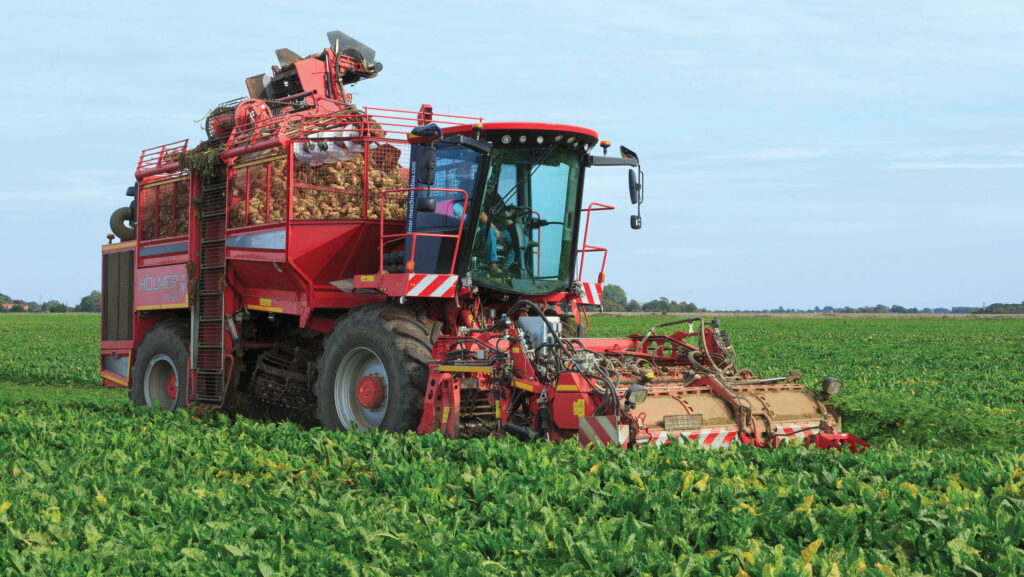
Yields will be compared this autumn between treated and untreated areas of sugar beet © Tim Scrivener
The crop received one pre- and three post-emergence herbicides. Once the crop reached full canopy, with plants joining across rows, the biostimulant was applied.
The BlueN from Corteva AgriScience was applied at 0.33kg/ha in mid-June, along with a micronutrient cocktail of manganese, magnesium, boron and sulphur and Intracrop’s Status biostimulant.
The BlueN biostimulant aims to supply 30kg/ha of nitrogen over 10-12 weeks, and is priced at a slight premium, to the equivalent of 30kg/ha of conventional nitrogen fertiliser.
The idea is that the product provides a sustainable and additional source of nitrogen to supplement the uptake from the soil, ensuring plants have access to it all season long.
The nitrogen which is released to the plants following the BlueN application is not at risk of leaching, demineralisation or volatilisation, say the manufacturers.
One 25ha field had the biostimulant applied, with a 24m strip left untreated, and the other 25ha block was left untreated with some strips treated. The yields will be assessed at harvest time.
There was little visible difference between the treated and untreated areas in July, about one month after the biostimulant had been applied.
“We will monitor these strips to see what yield improvements we achieve and, hopefully going forward, if the beet looks healthier throughout, we’ll be able to cut back on our nitrogen application early on,” Sam says.
Nitrogen biostimulant
Corteva says its BlueN product helped to fix nitrogen from the air in 2023, and led to yield increases in 80% of crops of maize, sugar beet and potatoes monitored – when applied on top of a farm’s normal nitrogen rate.
A foliar application of the bacteria enters the plant through the stomata on the leaves. It can take a week to “colonise” on a crop, and can then fix about 3kg/ha of nitrogen a week from the atmosphere, to gain 30kg/ha over a 10-12 week period.
The product can be applied to sugar beet from the six-leaf stage, and the company says that it can be added to a normal nitrogen dosage or used to replace 30kg/ha of ammonium nitrate (or its equivalent).
The group says the product is better for the environment as it feeds the plant over a long period, and is less likely to be leached away by rainfall, as can be the case with ammonium nitrate applications.
Corteva says that in an independent UK trial last year, the addition of BlueN to a standard farm fertiliser programme for sugar beet gave a 6.6t/ha yield increase, compared with the standard programme.
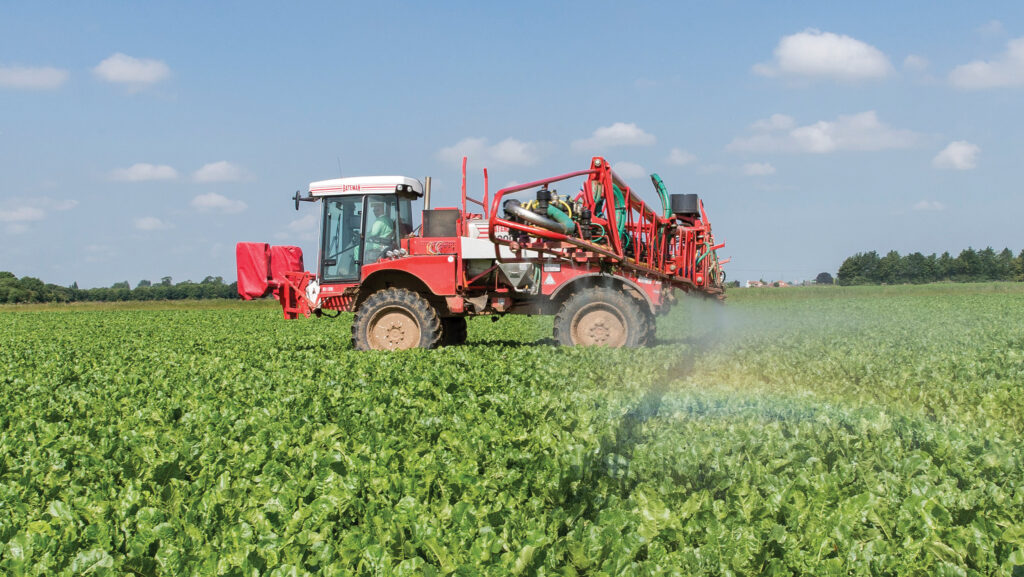
Once the crop reached full canopy, the biostimulant was applied © GNP

